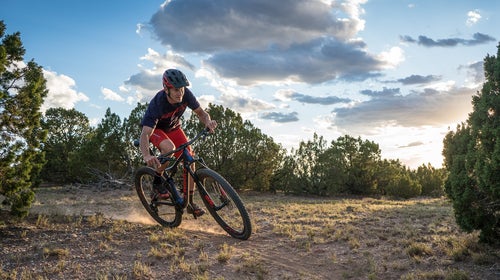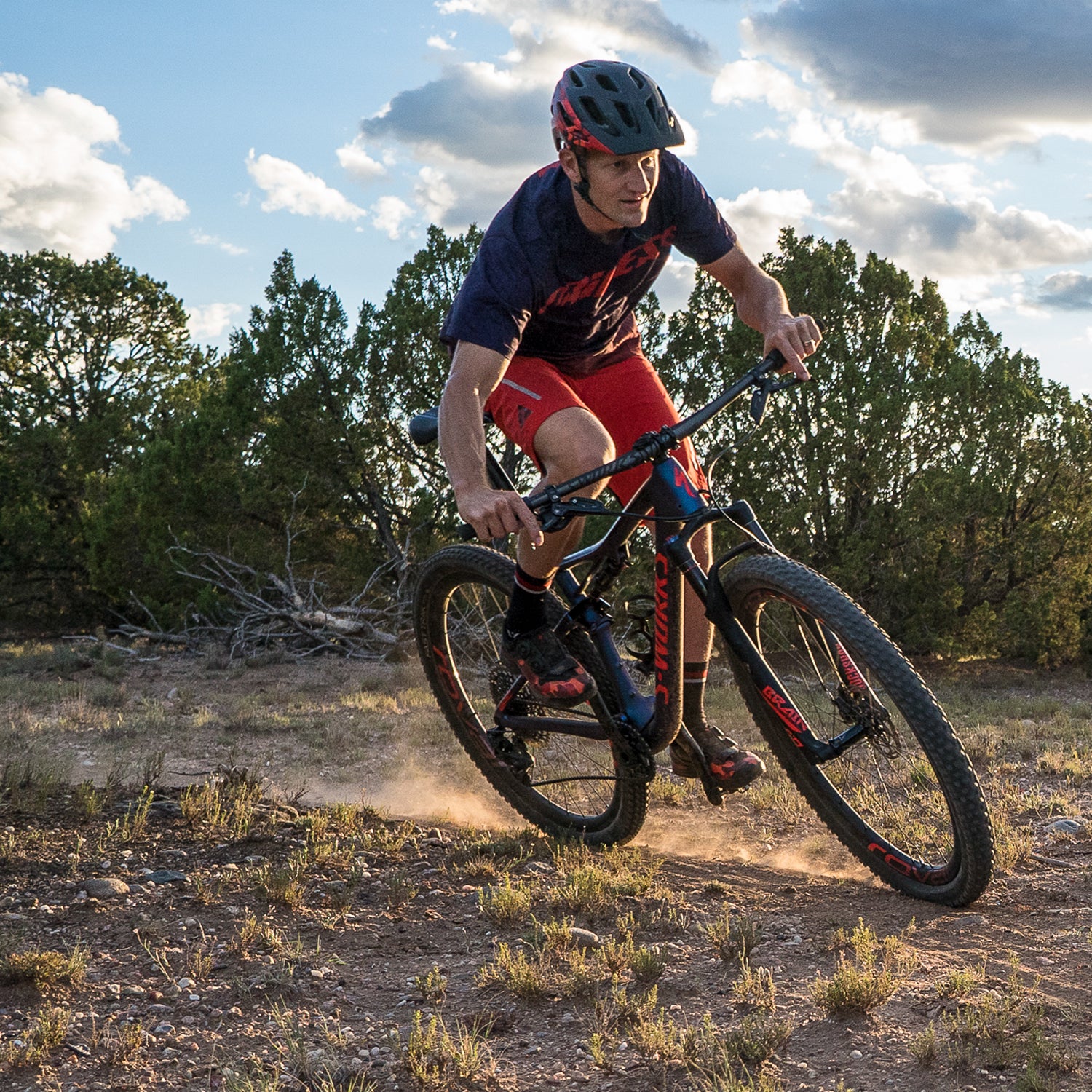Conventional wisdom has long held that there’s nothing better than a superlight bike with long, low, aggressive geometry for going fast on cross-country trails. Considering that Nino Schurter has won every UCI Mountain Bike World Cup race this season aboard a with a position so downward contorted that it would make most yogis squirm, that prescription still holds.
However, in watching some of the footage from this year’s races—for instance the —I couldn’t help but notice that these guys, the best racers in the world, had a hard time negotiating the track. The precipitous, slick, nasty looking course looks like it would be tricky to pilot aboard a proper trail bike, much less on the steep, spindly bikes favored by the world’s top XC racers.
That squares with our testing experience. In the last few years, as components and bikes have gotten lighter, our testers have gravitated toward bikes with slacker and more forgiving geometries, additional travel, and niceties like burly tires and dropper seat posts that make the riding experience more enjoyable. We tested only one cross-country race bike at the 2017 bike test, and just two the year before. Taken together, that had us wondering: Are XC race bikes obsolete except for at the highest echelon of the sport? Should the average rider even consider buying a racer anymore, considering how good and light trail and all-mountain bikes have become? And how are bike companies negotiating the changes in the cross-country market to keep these bikes relevant?
To answer these questions, I’ve spent the last months testing a trio of new cross-country machines. (I’d have included Schurter’s winning Scott, but we’ve already tested and loved it, though tellingly, our preference was for Scott’s plus-size offspring.)
Canyon Lux Pro Race Team ($3,200 to $7,000)
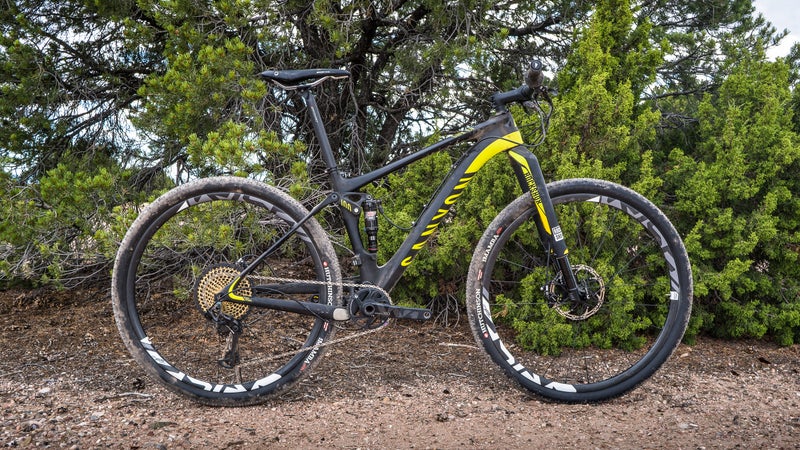
Canyon is new to the U.S., having just begun selling here this week, but the German company’s 29er carbon race bike, the , is the most conservative of the three bikes we tried. It’s the steepest of the bunch, with a 70-degree head angle, and has the longest chain stays (450mm) and stem (90mm). That gives the bike a decidedly twitchy and old-school feel, and it was the bike on which I most missed having a dropper post because I felt so high and forward on steep terrain.
Of course, the Lux is a thoroughly modern build, especially the Team model we rode, which had a SRAM XX1 Eagle drive train, carbon SRAM Rise 60 wheels, and a RockShox RS-1 fork. Our size medium weighed an impressive 22.4 pounds out of the box, though part of that feathery weight came from paper-thin Continental X-King tires, both of which sprung huge sidewall tears in the first two days of our rocky, New Mexico riding. The suspension felt the plushest of all three, and I loved the lateral stiffness and small-bump handling of the RS-1 fork, despite its weight penalty. There are smart little design cues, as well, including a nifty little ring beneath the stem that prevents the fork from crashing into the top tube if oversteered, and a sole bar-top button that locks out the shock and fork at once. But the very idea of a shock lockout, as well as the choice of Grip Shift, point to the bike’s European sensibilities.
Still, if you don’t mind your speed with a helping of jitteriness, it’s impossible not to like the Lux considering its price tag. This model, the top spec available in the U.S., goes for $7,000, which is almost 30 percent less than the comparable Specialized Epic. And the Canyon 8.0 ($4,500) and 7.0 ($3,200) represent even more value.
Rocky Mountain Element ($3,500 to $9,400)
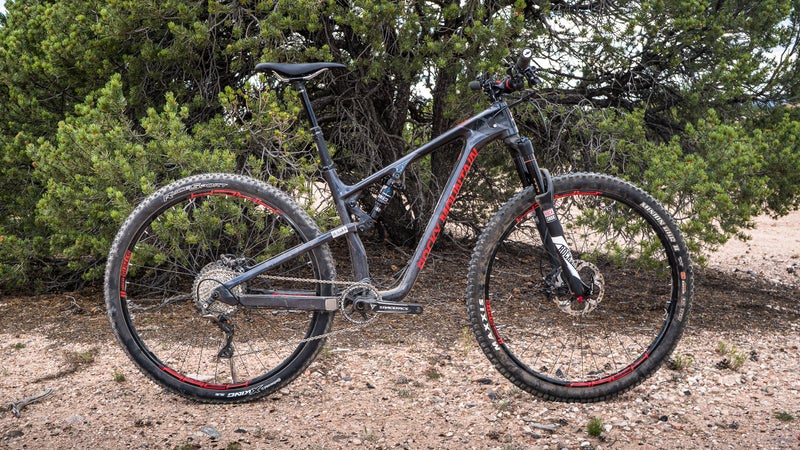
On the other end of the spectrum is the , which is the North Shore’s answer to the cross-country bike and the equivalent of many brands’ full-fledge trail machines. It has 100mm of travel in the rear paired to a 120mm fork, a 69-degree head angle (in the slackest setting), a stubby 60mm stem and yawning 800mm bars, and a dropper post. Rocky sent me the 990 RSL BC Edition ($6,000) for the B.C. Bike Race, and as such it gets some meatier bits and pieces compared to the standard Element, including a RockShox Pike fork instead of a Fox 34, Stan’s Arch wheels rather than the lighter Crest model, and beefy Maxxis Minion tires as opposed to Ikons.
That’s overbuilt by most cross-country standards, and indeed the bike weighed 27 pounds. So yeah, this bike wasn’t the quickest climber in the bunch, though it hooked up just fine. The trade-off, however, was impeccable downhill manners relative to the other two bikes. With those wide bars and the saddle dropped, I was fast and confident on terrain that I had to pick through slowly on the Epic and Lux. Except for the smaller gear range (46-tooth granny gear), I also favored the Shimano XT and XTR components here over the feathery SRAM stuff on the other bikes, mostly because it held up flawlessly while the competition needed tweaking and bleeding.
If I were buying the Element, I’d lean toward the lighter models (e.g. no B.C. Edition), as the weight savings would save time and energy climbing, but you’d still get the geometry and trail niceties on the down. (According to Rocky, the top-shelf 999 weighs a much more competitive 24.7 pounds.) While not the exemplar due to weight, the Element points the way forward for cross-country machines as it makes short travel manageable and more fun to ride than the steep, nervous old days.
Specialized Epic ($2,900 to $10,500)
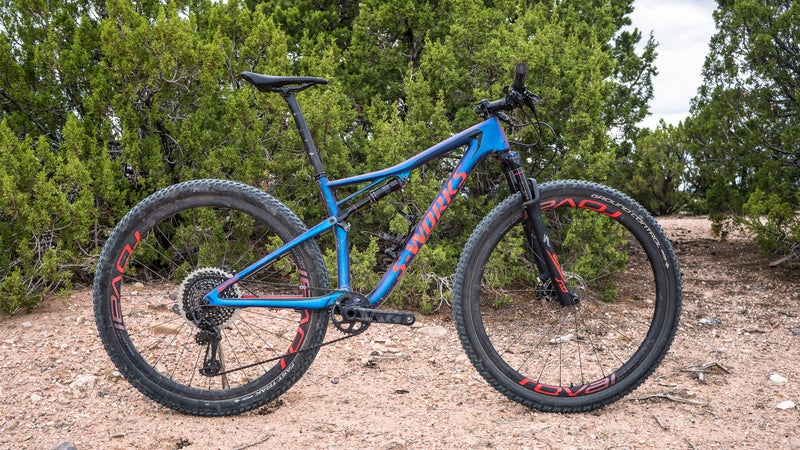
The is perhaps the most venerable cross-country race bike on the market, and it gets some significant updates for the upcoming season. Most notably, Specialized has done away with the rear pivot, making this a single-pivot design that relies on flex in the stays for the first time ever. The head angle is a full degree slacker (now 69.5 degrees), the rear end is tighter (438mm chain stays), and the front center is longer to allow for a shorter stem (75mm). Taken together, it’s a more modern feeling bike, though the steering is still surprisingly quick thanks to a custom 42mm fork offset, which basically pulls the wheel back underneath the bike. Specialized also trimmed a ton of weight out of the frame (350 grams in the S-Works models), and in this XX1 Eagle Trim ($9,500), the bike weighs an almost miraculous 21.4 pounds.
As far as fit and feel, the Epic sits between the Lux and Element. It’s crazy light, so pedaling and climbing feels like a revelation, but the slacker angles and more modern geometry mean the bike is surprisingly deft and confident in rougher and steeper terrain. The new Brain, which turns the suspension on and off based on terrain, also feels much more supple and quick than before, partly, I assume, because it is now located at the rear hub for quicker engagement. And the new Roval Control SL wheels are incredible, both stiffer and wider than their predecessors for better cornering and tire contact, but somehow lighter than before. (1330 grams!)
Last year, I felt that the Epic was a bit dated and had lost its edge in the market. But with this new model, Specialized has done an excellent job of bringing the bike back. The Epic is, once again, the standard-bearer and seems to point the way forward for the entire segment: namely, it’s slacker and more confident, especially on technical terrain, without sacrificing weight. In fact, the new Epic is so self-assured that I plan to swap in a 120mm fork and dropper post to see if it can become the ultimate lightweight trail machine. Oh yeah, and that color scheme—officially called Gloss Chameleon Purple with Rocket Red—is the sexiest thing we’ve seen in a while.
So Do You Actually Want an XC Bike?
There will always be a place for light, fast race machines, but those bikes, as with everything in the market, continue to evolve. “Historically, cross country bikes were steep and twitchy feeling, partly because you were on the edge of control,” says Brian Gordon, Specialized product manager for the Epic. “They were definitely faster uphill, and they felt faster downhill. But while trail and downhill bikes don’t feel as quick, on the downhills, at least, times are quicker.” So, says Gordon, the goal with the new Epic, and with XC bikes in general, is to marry the handling and fast climbing characteristics of a traditional cross-country bike with the confidence and downhill agility of a trail machine.
This is what I’ve always wondered: Why must XC bikes be so long, low, and aggressive? Part of the answer lies in the need to save weight. Because these bikes tend to run feathery, low-tread race tires to save grams, it’s important to keep a rider’s body weight over the front end for traction. The low front end also makes climbing, especially through uphill switchbacks, the quickest. Having said that, unless you’re in a situation where second and tenths of seconds count, you’re likely to make up for time lost climbing on the descents.
I still feel the market is due for a gossamer bike, say, sub-23 pounds, with slacker angles than a traditional XC bike and perhaps a bit more travel. Basically, I think most riders would benefit from a bike that blends the Elements angles with the Epic’s weight. (For the record, Trek had the formula dialed in the , but they subsequently made that model more trail oriented.)
If I were racing an event like the Leadville 100 or a local XC series, I’d want a bike like the Epic or Lux. And I appreciate the modifications that Specialized has implemented on the Epic to make it more of an all-arounder. Still, with bike weights coming down and suspensions constantly improving, most riders (other than dedicated racers) who want just one bike and favor trails beyond pure, buffed-out flow, will be better off on a trail bike like the , —or for that matter, the Rocky Mountain Element. And yes, the lines will continue to blur.
